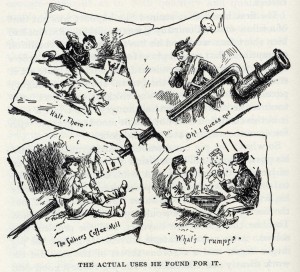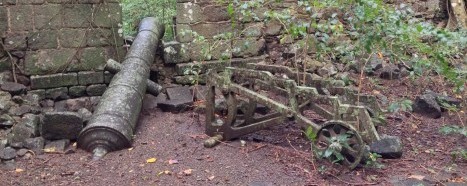You can read about my current research on my blog. I believe in open access, and you can download all of my publications via the links below courtesy of the various publishers.
“Living History Events: Looking Ahead to the American Semiquincentennial, Introduction” Proceedings of the 2021 Conference and Annual Meeting, The Association of Living History, Farm and Agricultural Museums. I facilitated and provided an introduction to an online conference panel which generated a set of papers in this volume.
“Review: ‘Townsends’ YouTube Channel,” The Public Historian 44:2 (May 2022), 133-136. This review essay discussed the videos produced by Townsends, formerly Jas. Townsend & Son, primarily related to 18th-century American life and foodways.
“Tajuro’s Jacket: A Story of Japanese Castaways, Russian Ambassadors and a Remarkable Early Nineteenth-Century Sailor’s Jacket,” with Matthew Brenckle, Costume 55, no.2 (September 2021), 240-265. This article examines a rare surviving sailor’s jacket and the story of the Japanese castaway who wore it.
“Fearnothing Seamen’s Jackets and Honey Comb Breeches: A 1760 Shipping Invoice for Ready-Made Clothing in the Memorial Libraries,” with Henry Cooke, “The Village Broadside: The Blog of Historic Deerfield,” September 15, 2021. This blog post introduces the work and archive of a typical 18th-century Boston tailor.
“Review: The Boghouse podcast,” The Public Historian 42:1 (February 2020), 133-136. This review essay discusses a podcast about Philadelphia, archaeology, and public history.
“Experiential History,” Journal of the History of Ideas Blog, online, February 10, 2020. This blog post is a think piece about the power of reenactment and immersive experiences as a form of historical work.
“Occupied Philadelphia: An Experiment in Urban Living History,” The Public Historian 41:3 (August 2019), 31-48. This article examines a large, outdoor living history event conducted at the Museum of the American Revolution in 2018.
“Confederates Out of the Attic,” History@Work, online, July 2, 2019. This blog post discusses the death of journalist Tony Horwitz and my experience with his book, Confederates in the Attic.
‘A complete suit of flannel under-clothing, for bad weather’: Rediscovering and Reproducing Richard Henry Dana Jr.’s Cape Horn Wardrobe,” in New England at Sea: Maritime Memory and Material Culture, The Dublin Seminar for New England Folklife Annual Proceedings 2016, Peter Benes, ed. (Deerfield, MA: The Trustees of Historic Deerfield, 2019), 165-178. This article documents an experimental archaeology project to recreate garments from an 1840s sea voyage.
“Repeating History in Old City after Chestnut Street Fire,” Hidden City Philadelphia, March 1, 2018. This article discusses the history of two fires on Chestnut Street in Old City Philadelphia.
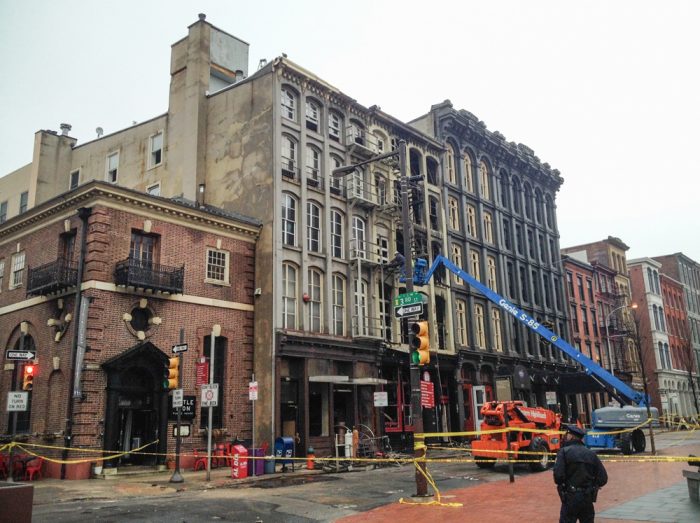
“A Sailor’s Underwear: What Clothing at Sea Can Tell Us,” Mystic Seaport for Educators, Artifacts, Fall 2017. This brief article and resource set for teachers highlights Richard Henry Dana, Jr.’s undergarments, made at sea in the 1830s and in the collection of Mystic Seaport.
“What We Learned from Obadiah Mead’s Jacket,” with Karen Frederick, Greenwich Historical Society News and Programs, May/June 2017, 3. This brief feature highlights a remarkable jacket in the collection of the Greenwich (CT) Historical Society.
“Reenactors at Your Historic Site.” In 2017, I authored this resource packet about reenactors and reenacting, which includes sample guidelines and contracts, for Sustaining Places, a University of Delaware Museum Studies initiative that provides resources for small historic sites.
“Breaking the Fourth Wall of Living History: When Inaccuracy Makes for Good Interpretation,” Association for Living History, Farm and Agriculture Museums Bulletin 45, no. 4 (Winter 2016), 11-13. In this article, I discuss the potential of giving historic site visitors access to the backstage processes that go into recreating historical objects, using nineteenth-century waterproof clothing as an example. You can download a copy here, by permission of The ALHFAM Bulletin.
“Two Years Aboard the Welcome: The American Revolution on Lake Huron,” Journal of the American Revolution (alllthingsliberty.com), February 2016. This article is the result of years of on-and-off research on a particular sloop that sailed the Great Lakes during the American Revolution. You can read it here. It was also published in the Journal of the American Revolution Annual Volume 2017 (Yardley, PA: Westholme Publishing, 2017).
“Joseph Long’s Slops: Ready-Made Clothing in Early America,” Winterthur Portfolio: A Journal of American Material Culture 49, no. 2/3 (Summer/Autumn 2015), 63-91. In this article, I argue that ready-made clothing in early America established the groundwork for the garment industry that emerged in the mid-nineteenth century and remains dominant today. you can download a copy here. It is based on my master’s thesis, available here, in which I also discussed clothing at the Philadelphia almshouse.
“‘Darkened by the Tides and Time’: The History and Material Culture of His Majesty’s Ship Augusta,” The Military Collector & Historian: Journal of the Company of Military Historians 66, no. 2 (Summer 2014), 110-124. In this article, I examine the three “lives” of a Revolutionary War British naval vessel: as a warship on the Delaware River, as a salvaged wreck, and as souvenir relics. You can download a copy here.
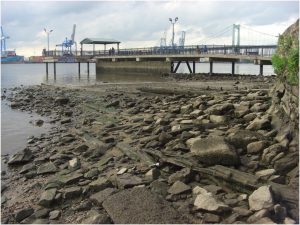
In 2013, I worked on “The First Oval Office Project,” an initiative undertaken by the Museum of the American Revolution and Colonial Williamsburg to recreate George Washington’s Revolutionary War sleeping tent. Besides discussing it on my own blog, I wrote a post about this work on the blog “Enfilade,” here.
“‘Every man turned out in the best he had’: Clothing and Buttons in the Historical and Archaeological Records of Johnson’s Island Prisoner-of-War Depot, 1862-1865,” Northeast Historical Archaeology 40 (2011; published 2013), 86-103. In this article, I discuss the buttons and garments of Confederate officers-turned-prisoners on Johnson’s Island, Ohio, as well as a laundry inventory from 1865 and archaeological evidence from the site. You can download a copy here.
“Textile Artifacts from H.M. Sloop DeBraak,” The Military Collector & Historian: Journal of the Company of Military Historians 65, no. 1 (Spring 2013), 75-88. In this article, I discuss an amazing collection of textile fragments from the DeBraak, a British vessel that sank in Delaware Bay in 1798. You can download a copy here.
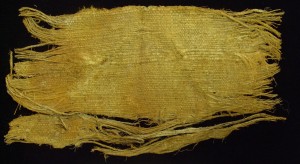
“Working Men’s Clothes in New Jersey, 1750-1825,” in Work of Play: Where Business Meets Leisure, edited by Siobhan Fitzpatrick, 9-23 (Madison, NJ: Museum of Early Trades and Crafts, 2013). In this article in an exhibition catalog of the Museum of Early Trades and Crafts, I examine the clothing of slaves, servants, apprentices, sailors, and farmers in early New Jersey. You can purchase a complete copy of the printed of Kindle catalog from Amazon here. All proceeds benefit the Museum’s Collection & Exhibitions department. You can download a copy of my article here.
“Crafting a New Historian,” Chronicle of Higher Education, December 5, 2012. In this essay, I discuss how my historical sewing work overlaps with and influences my academic career in history.
“The Butcher, the Baker, & the Tallow Chandler,” Winterthur Library Exhibition, 2011. This brochure discusses the material I curated in a small exhibition for the Winterthur Library (Delaware) focused on bread, meat, and candles as material culture.
“Innocents at War: Si Klegg’s Civil War,” Common-Place 11, no. 2 (January 2011). In this article in an online humanities journal, I detail the history of Wilbur Hinman’s 1887 comic Civil War novel Corporal Si Klegg and His “Pard.”
